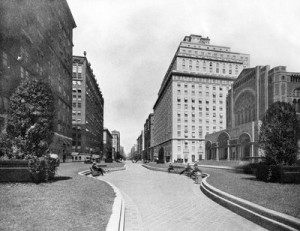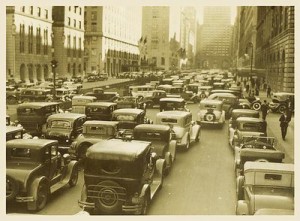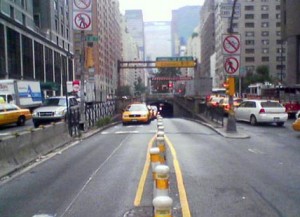Part of the No Impact project is to have a positive impact to offset the unavoidable negative impact of, well, being alive, and part of that has been to the work of environmental organizations. As a result of that, Wednesday night was a mega-proud night for me because I got invited to be a member of the board one of the coolest organizations going–Transportation Alternatives (TA).
(Before I waste a minute more, by the way, if you love this blog and have been enjoying it and feel like showing some appreciation, you could do so by giving a little financial support to TA. You can become a member or make a special donation here, where I’d be grateful if you also left behind a comment saying No Impact Man sent you.)
What is so cool about TA is that it’s emphasis is not on helping the planet so much as helping the people. In particular, TA helps New Yorkers to have more “livable streets.” That means more trees, more public space, more trees, more bikes and fewer cars. It turns out, you see, that by emphasizing improving living conditions for the people, TA automatically helps the environment.
The idea is that the huge amount of public space that criss-crosses our City and is currently devoted to cars should be devoted to hanging out and having fun. By dedicating the streets to human rather than automotive activities, the people get happier and so does the planet. Fewer cars, happier people, happier planet.
Amazing how what’s better for us is also better for our habitat, right? That’s why I’ve written before about opportunities in the environmental crisis. Getting cars out of New York City and other communities that ought to
put people before cars would not only cut down on greenhouse gases and improve air quality but would offer us the opportunity to have much nicer places to live.
Imagine the city as one big park! Don’t believe me? Look at the pictures of New York’s Park Avenue below. Which do you like? New York with cars or New York without? (You may have seen these pictures on the blog before, but I feel like celebrating my new TA board position by showing them again).
PS For more on policy solutions to the urban car crisis, see The Green Transportation Hierarchy.

New York’s Park Avenue before 1922 (courtesy Aaron Naparstek)

New York’s Park Avenue after 1922 “improvements” to accommodate automobile traffic (courtesy Aaron Naparstek)

New York’s Park Avenue today (courtesy of BuddhaCab)